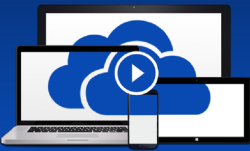Well my old LG G2 phone (about 3 years old) finally bit the dust — it was dropping the connection to my provider (ATT) at random times. Not a good characteristic for a phone.
I quickly looked around for an unlocked, Android phone that I could buy outright, without loosing an arm or a leg in the process. I hate paying monthly rent on a phone. I settled on the Moto G4+ with 64 GB of on-board memory. Not sure I needed the 64GB upgrade since the G4 does have a SIM expansion slot that can emulate on-board memory, but I learned a long time ago that you should max out your memory when you buy technology since you may not have the option later.

Naturally, once I bought it the G5+ was announced.
From the time I had it custom configured until the time it was dropped off at my doorstep, it took a week. Not bad, since the device had to be assembled in China. I dropped in my SIM card and was ready.
The first phone I received had an intermittent touch screen issue. It took me 2 phone calls with tech support to convince them I needed a new phone. The first call told me how to do various hardware and memory resets. By the time I reordered, they ran out of some of the parts to configure the phone exactly the way my old one was, but that wasn’t a bit issue for me. My new phone was on its way and I received it in exactly one week.
The Motorola/Lenovo help desk was pretty good (as far as help desks go). I was able to talk with a human within 2 minutes on every call I made — I think there were 5 in total.
- 2 related to the first phone problem
- 1 related to an issue with the re-order – there was a spelling error in my email address
- 2 related to shipping back the old phone – also related to the previous spelling error
Granted, that is not the best track record but each time I was talking with a person who knew what had happened before. They were curious and very helpful (having personally helped folks on the phone many times in my career, I realize the strain that they can be under, so I may be more tolerant than most).
Overall, this is the best Android phone I’ve ever had, so far. All the important software I had loaded on my old phone runs on this one. The conversion from my old phone to this one was painless, taking probably 2 hours with 1.5 of that being Android loading up the 140 applications I had on my old phone (which it remembered). This process is MUCH better than it used to be.






![20150312_061004[1]](https://cebess.wordpress.com/wp-content/uploads/2015/03/20150312_0610041.jpg?w=700)
